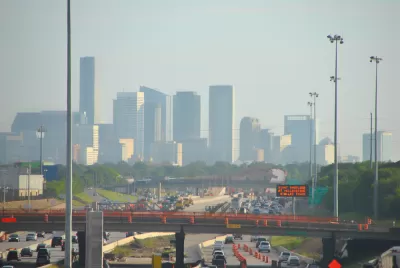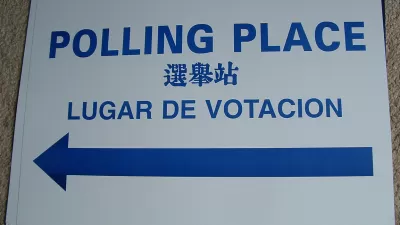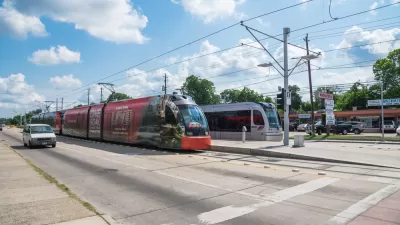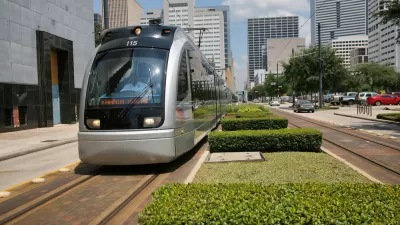The executive director of Environment Texas makes the case for public transit as a key tool in improving air pollution in and around Houston. Houston voters will vote on the MetroNext bond referendum today.

Cars are responsible for an increasing number of bad air days in Houston, according to an op-ed by Luke Metzger, and it's time for the city to focus on cleaner transportation alternatives.
Continuing to double down on costly car-centric infrastructure will only induce more demand for driving and lead to more pollution and congestion, as the expansion of the Katy Freeway years ago proved. Because Houston can’t prosper without clean air, we must clean up the way we get around. And Houstonians can help do that by voting to approve Metro’s bond referendum on this November’s ballot.
If approved, the bond would provide $3.5 billion in funding to implement the MetroNext Moving Forward Plan.
MetroNext will include 75 miles of new bus rapid transit — fast, convenient service that works like light rail, with dedicated lanes and new stations. MetroNext will include 290 miles of “boosted” routes, which will keep buses moving and prevent idling. It will create 16 miles of new light rail, which is electric, and it will fund a 25 percent increase in local bus service, adding new routes and rebuilding stops with shelters and real-time passenger information, It also will enhance accessibility improvements to help people on foot and on bikes walk or ride to cover that first and last mile to and from stops.
The benefits to mobility are one reason to vote for the bond, according to Metzger, but improving the air in Houston is the main selling point. "With MetroNext, by 2040, Houston will see as many as 500,000 vehicle trips eliminated every day. That will reduce the region’s ground-level ozone pollution and our greenhouse gas emissions by 680,000 metric tons every year."
FULL STORY: Remember the dirty air you could see from afar? It’s still with us.

Planetizen Federal Action Tracker
A weekly monitor of how Trump’s orders and actions are impacting planners and planning in America.

San Francisco's School District Spent $105M To Build Affordable Housing for Teachers — And That's Just the Beginning
SFUSD joins a growing list of school districts using their land holdings to address housing affordability challenges faced by their own employees.

The Tiny, Adorable $7,000 Car Turning Japan Onto EVs
The single seat Mibot charges from a regular plug as quickly as an iPad, and is about half the price of an average EV.

Seattle's Plan for Adopting Driverless Cars
Equity, safety, accessibility and affordability are front of mind as the city prepares for robotaxis and other autonomous vehicles.

As Trump Phases Out FEMA, Is It Time to Flee the Floodplains?
With less federal funding available for disaster relief efforts, the need to relocate at-risk communities is more urgent than ever.

With Protected Lanes, 460% More People Commute by Bike
For those needing more ammo, more data proving what we already knew is here.
Urban Design for Planners 1: Software Tools
This six-course series explores essential urban design concepts using open source software and equips planners with the tools they need to participate fully in the urban design process.
Planning for Universal Design
Learn the tools for implementing Universal Design in planning regulations.
Smith Gee Studio
City of Charlotte
City of Camden Redevelopment Agency
City of Astoria
Transportation Research & Education Center (TREC) at Portland State University
US High Speed Rail Association
City of Camden Redevelopment Agency
Municipality of Princeton (NJ)





























